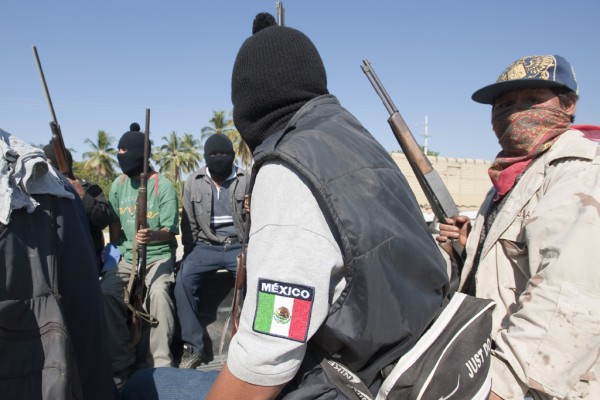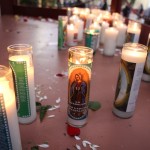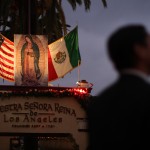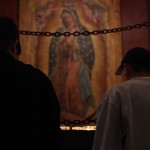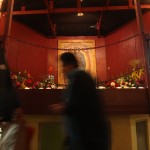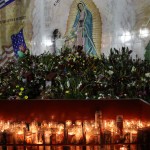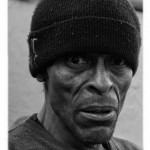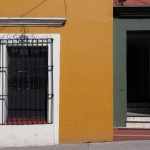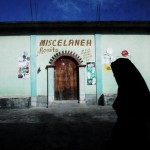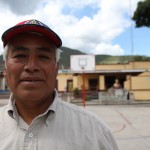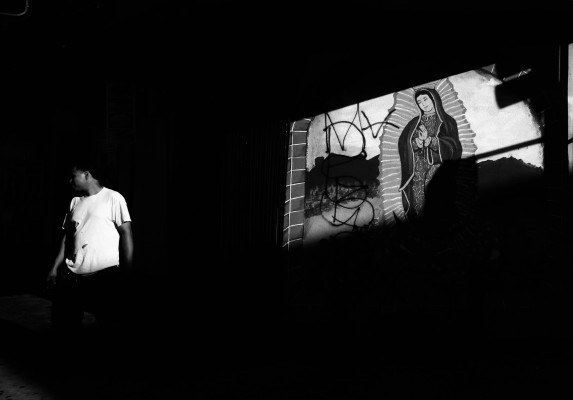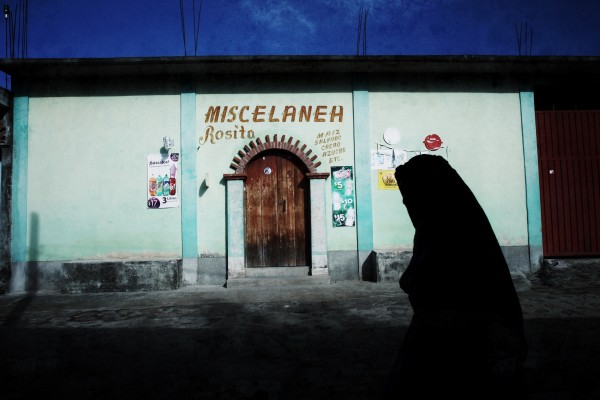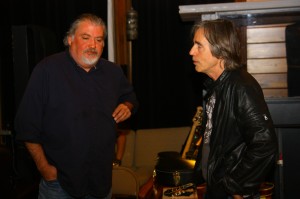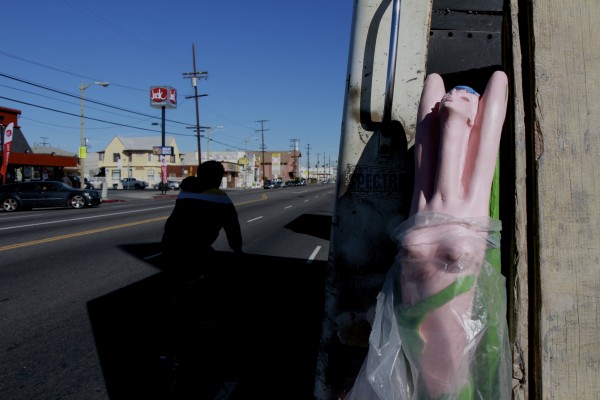
What’s nice about the Los Angeles of today is that you can go out a meet folks with worthwhile stories almost without trying.
I was in the area once called South Central L.A. (now South L.A.) and came upon a guy named Rogelio in a truck selling plaster statues to passers-by on Vermont Street: Snow White, bulldogs, snakes, Mickey Mouse, and this naked lady pictured here, among other things.
He buys them in Tijuana and brings them in.
I stopped to chat. He didn’t let me take his photo, but I shot other stuff.
He said sales of plaster was weak. “Enough to eat, but not well,” he said. “No meat.”
Rogelio is from Apatzingan, Michoacan. He was 16 in 1970 when he arrived in LA about 1 pm one day. He had a job by midnight.
Apatzingan is in Mexico’s Tierra Caliente, a particularly violent place, even before the latest nastiness. He went home a  month ago to visit family. The police refer all problems to the local drug cartel — a pseudo-Catholic group of drug traffickers called the Knights Templar. Wonder how anyone would want to remain a cop under such conditions — or join the force at all.
month ago to visit family. The police refer all problems to the local drug cartel — a pseudo-Catholic group of drug traffickers called the Knights Templar. Wonder how anyone would want to remain a cop under such conditions — or join the force at all.
At one corner, he said, there were two groups of headless bodies.
Still, he said he wants to return. This apparently has something to do with the fact that after 42 years in the country, he’s unable to find work that feeds anybody.
This, seems to me, is what LA is right now. If a Mexican immigrant has spent his time here learning new skills — English, welding, painting — he has a better chance of rolling with the economic bad times. But many people did not, assuming that the few skills they always had would be enough, as work had always been so plentiful that you could find a job in a few hours.
Those are the folks who are more likely to be leaving LA — some for other parts of the US, but mostly for Mexico, as it’s cheaper to be poor in Mexico, particularly if you have a place to live.
I told him about Craigslist as a place to put advertise his statues, and told him to give me a call if he needed help.
He said his daughter has a computer, but that maybe he’d call.


